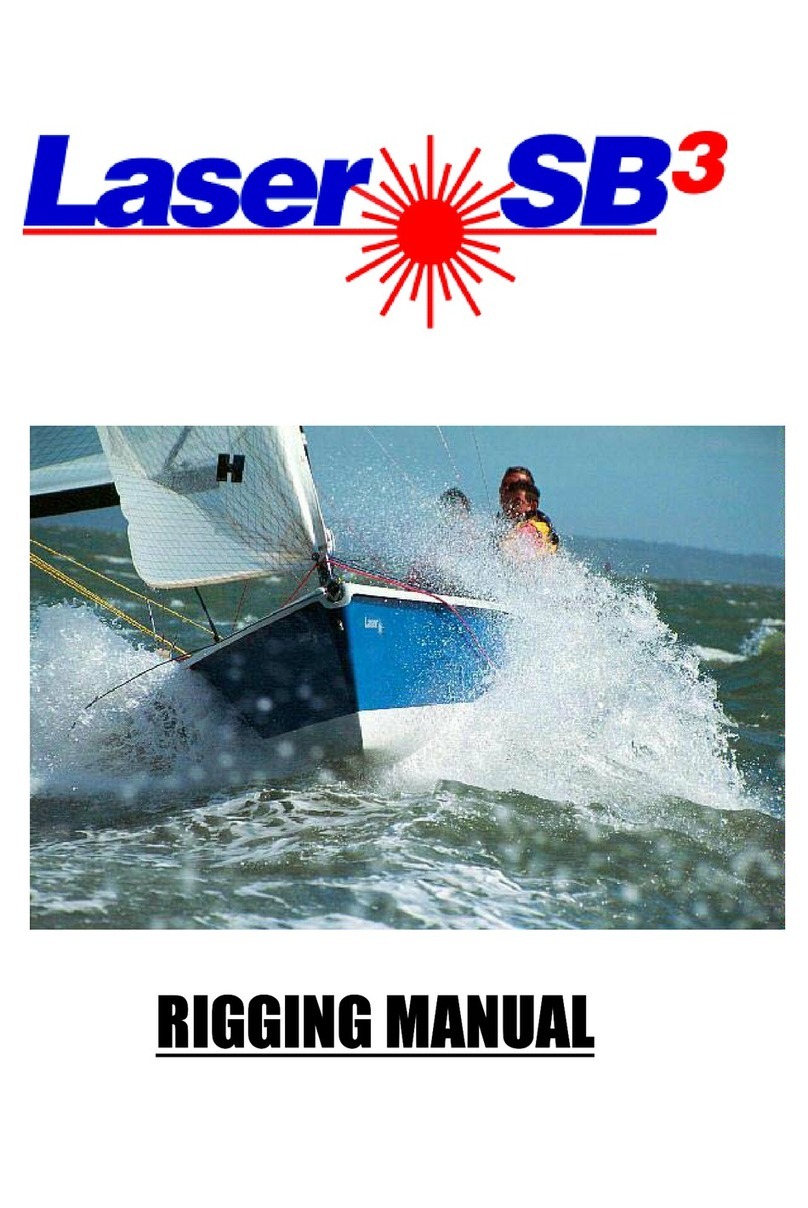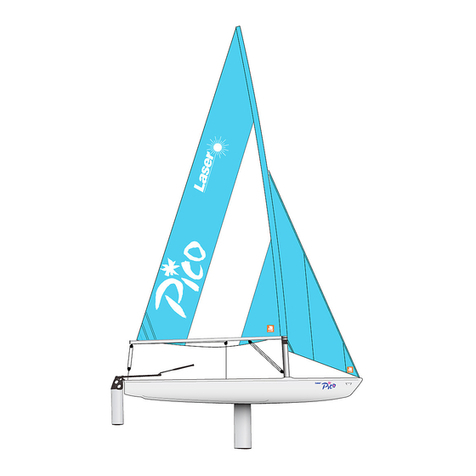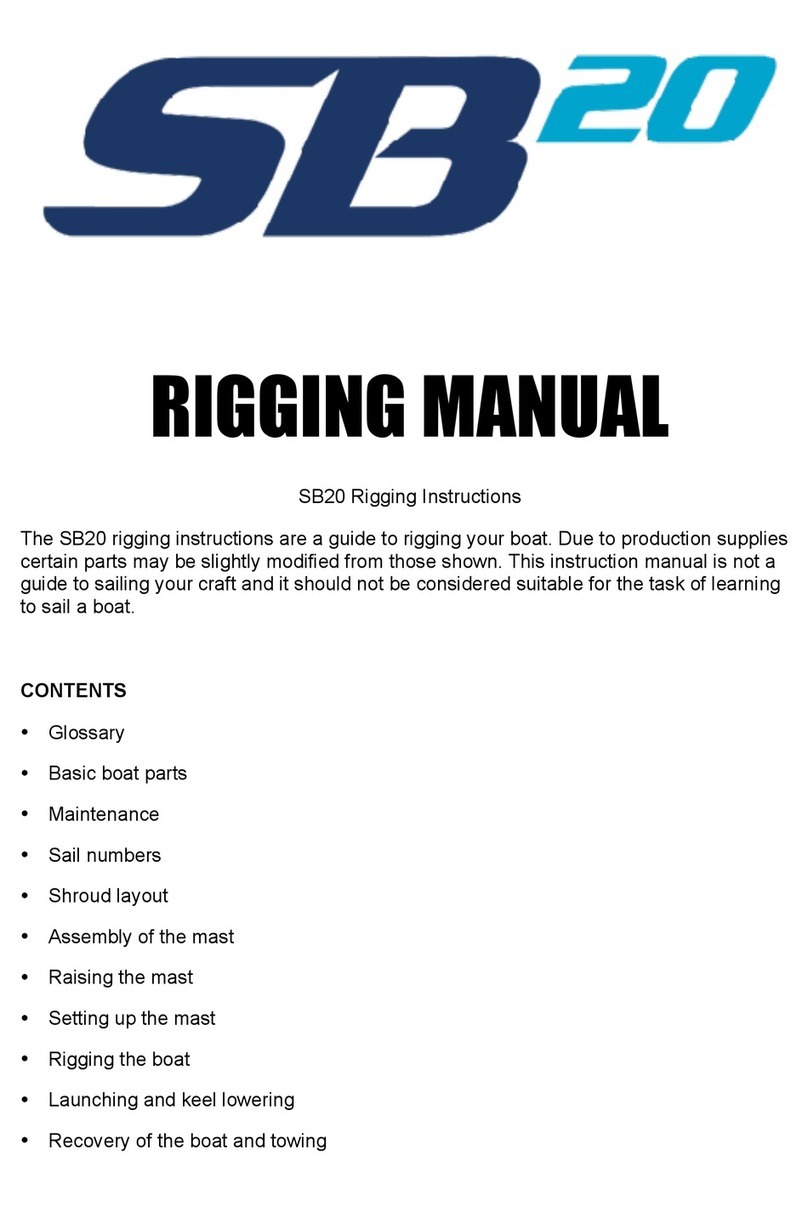
Maintenance and Service
x Keep the equipment clean by frequently flushing with fresh water. In
corrosive atmospheres stainless parts may show discoloration/brown
staining around screw holes and rivets, this is not serious and can be
removed with a fine abrasive.
x Excess water should be removed from the hull.
x Ropes, rigging and fittings should be checked at regular intervals for wear
and tear.
x All moving parts should be lightly lubricated to avoid jamming, i.e.,
McLube, Dry Teflon or a dry silicone based spray. Do not use Oil.
x Inspect shackles, pins and fittings – tape up to stop snagging, coming
undone.
x When refastening screws do not re – use Nylock nuts more than three
times.
x Damaged or worn parts should be replaced.
x Sails should be thoroughly washed down with fresh water, dried and
stored in a dry place.
x Trailers should be rinsed with fresh water and checked at regular intervals.
It is recommended that the trailer be serviced annually.
x Repairs to the polyethylene hull should be undertaken by people with the
relevant equipment and skills. Contact Laser Centre for advice.
x UV light will cause fading to some components and fittings, a cover is
recommended to reduce the UV degradation.
x Do not leave the rig under tension when not sailing or during
storage.
x Your Vago should only be used in conjunction with the Vago
specific Performance Sailcraft gunwale hung launching trolley. The
use of any other launching trolley may damage the hull and
invalidate your warranty.
x The hull should not be left on a pebble beach, as the polyethylene
could dent.
x Care must be taken to support the hull adequately if storing on
racking or similar. Any sustained point loading could permanently
dent or distort the hull.
7

































